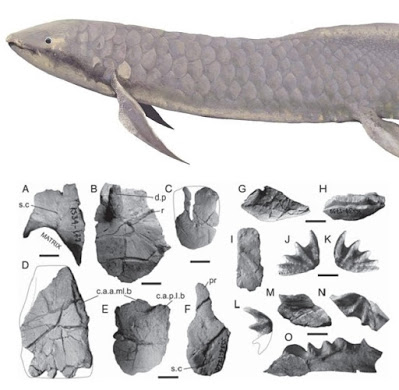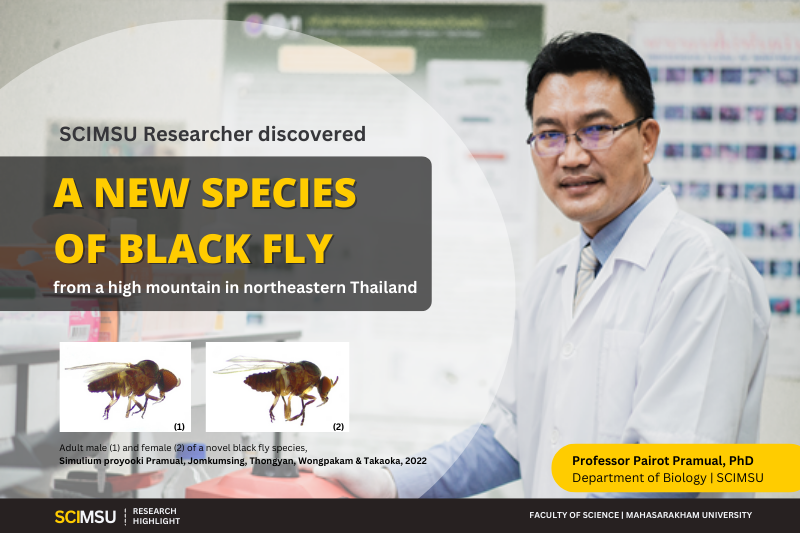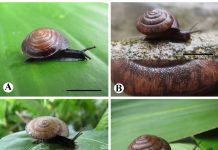On September 11, 2020, a researcher from the Department of Biology, Dr Uthumporn Deesri, together with Assoc. Prof. Dr Mongkol Udchachon, Director of Palaeontological Research and Education Centre (PRC) joined the press conference on the discovery of the new Jurassic lungfish species with the Department of Mineral Resources, Ministry of Natural Resources and Environment. This ancient lungfish species has been studied by fossil experts from Mahasarakham University, together with the Department of Mineral Resources’ Sirindhorn Museum, and the Natural History Museum of Geneva, Switzerland.
The new Jurassic lungfish species was found at the Phu Noi fossil site in Kalasin, where fossils of prehistoric creatures dating as far back as 417 million years have been identified. The fossil is considered to be about 150 million years old, indicating the existence of this species in the Devonian age. It is regarded as a rare fossil find, especially the skull part.
The creature was classified as a member of the Ferganoceratodus genus from its skull and teeth. Due to unique characteristics that differ from other species in the same genus, it has been formally named Ferganoceratodus annekempae. The Ferganoceratodus genus has only ever been found in China, Russia, and Thailand.

SYSTEMATIC PALEONTOLOGY
Subclass SARCOPTERYGII Romer, 1955
Order DIPNOI Müller, 1845
NEODIPNOI Agnolin, 2010 sensu Kemp, Cavin, and Guinot, 2017
Suborder CERATODONTOIDEI Nikolski, 1954 sensu Kemp, Cavin, and Guinot, 2017
Genus FERGANOCERATODUS Kaznyshkin and Nessov, 1985 (in Nessov and Kaznyshkin, 1985)
Type Species— Ferganoceratodus jurassicus Kaznyshkin and Nessov, 1985.
Referred Species— Ferganoceratodus szechuanensis (Young, 1942); F. martini Cavin, Suteethorn, Buffetaut, and Tong, 2007.

FERGANOCERATODUS ANNEKEMPAE, sp. nov.
Etymology— Species dedicated to Anne Kemp for her contribution to the study of lungfishes, past and present, and for her engagement in the protection of the Australian lungfish.
Locality and Horizon— Phu Noi, Tambon Din Chi, Kam Muang district, Kalasin province, northeastern Thailand. The lower part of the Upper Phu Kradung Formation, Upper Jurassic.
Lungfishes are an animal with special characteristics, with both gills and lungs available for respiratory purposes. It means that they have two ways to breath; they not only breathe oxygen in the water with the gills like other fishes, but they also have lungs like mammals to breathe oxygen in the air. This is something very special.
The new discovery sheds new light on the biogeographic relationships and stratigraphic succession of Eastern Asian lungfishes during the Jurassic and Early Cretaceous.
Lionel Cavin, Uthumporn Deesri and Phornphen Chanthasit. 2020. A New Lungfish from the Jurassic of Thailand. Journal of Vertebrate Paleontology. e1791895. DOI: 10.1080/02724634.2020.1791895







